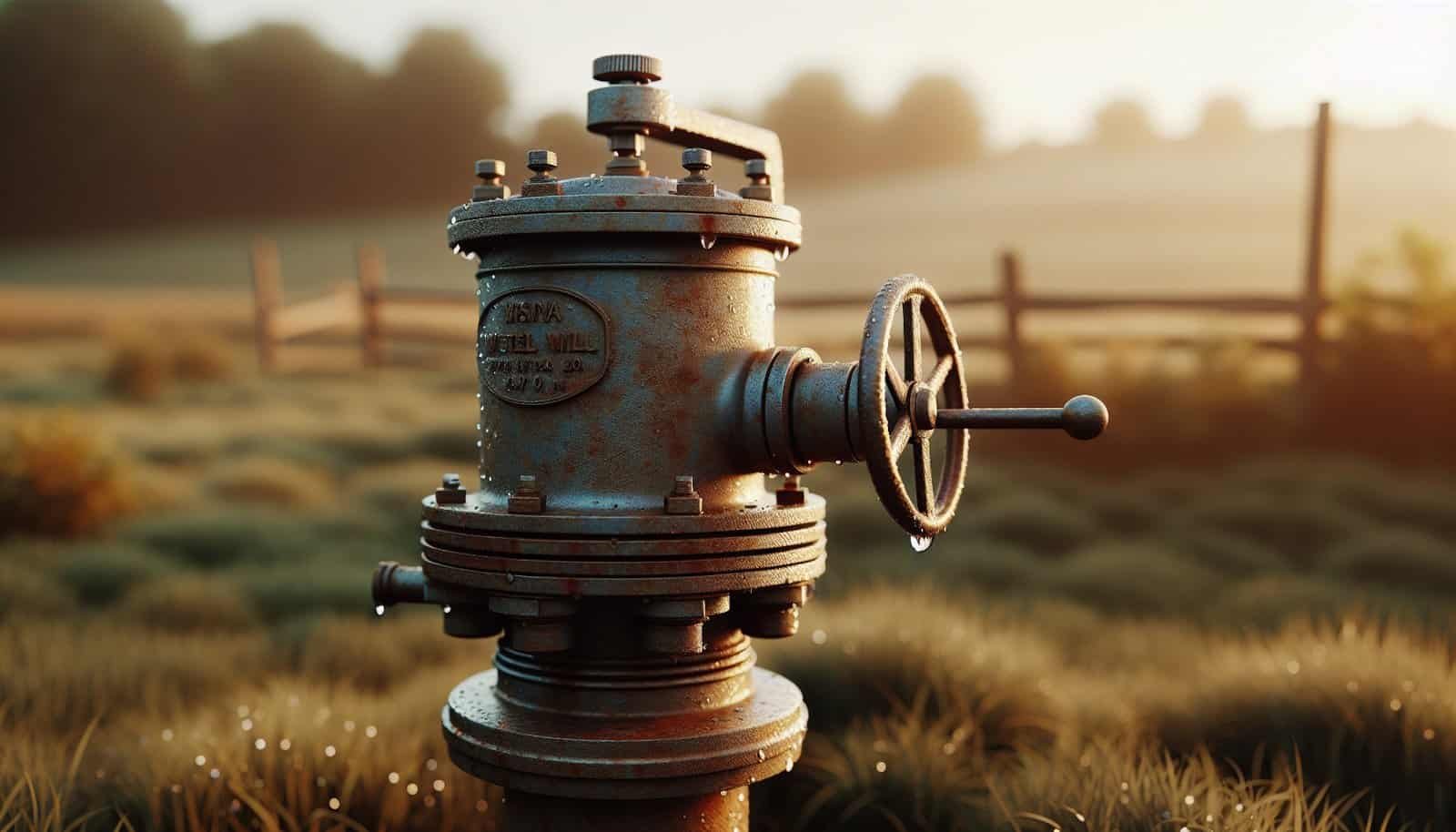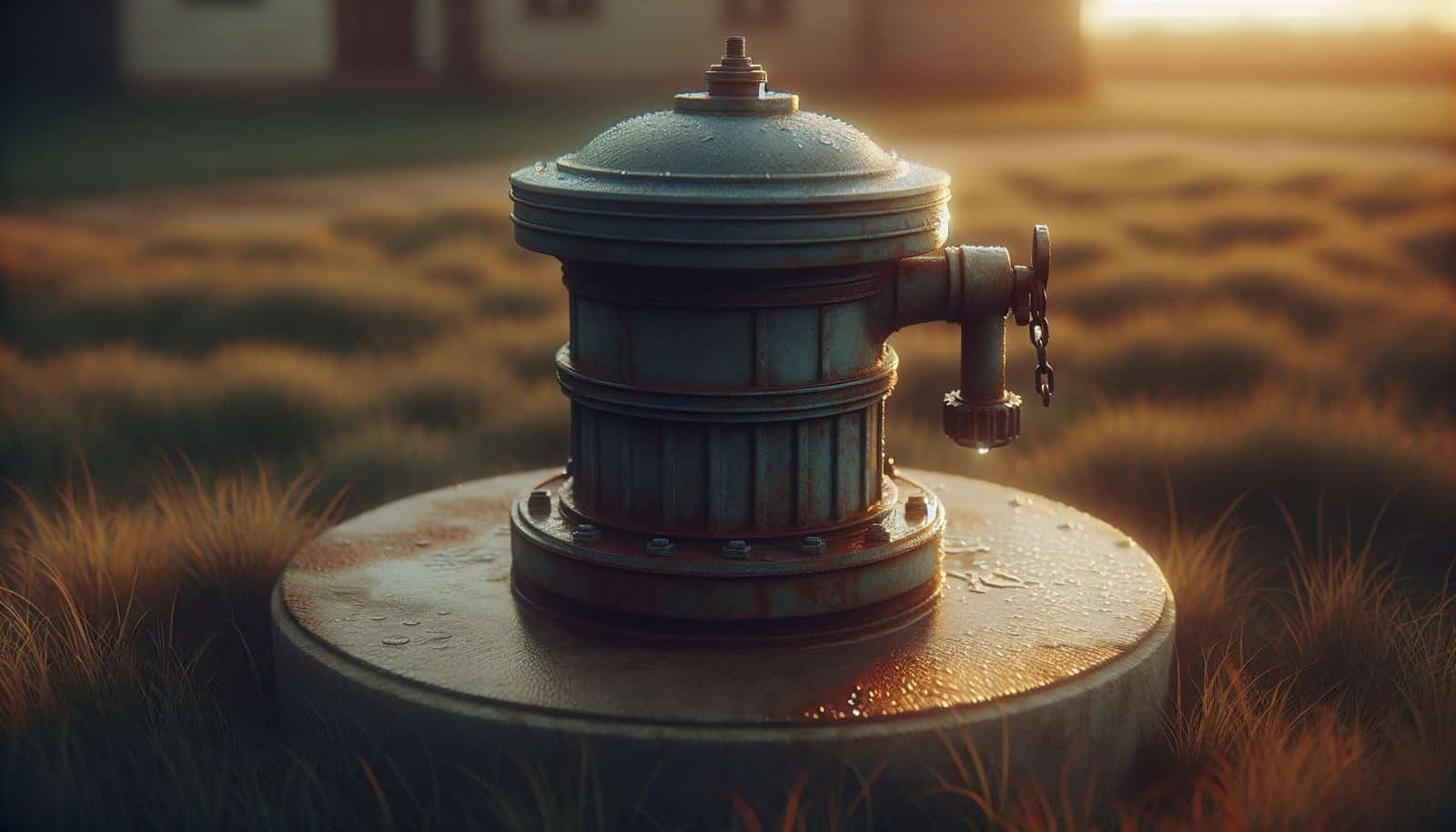Are you trying to figure out how long your residential water well will keep supplying safe, reliable water?
How Long Does A Residential Water Well Last?
You rely on your well for drinking, cooking, bathing, and irrigation, so knowing how long it can last helps you plan maintenance, budgeting, and potential replacement. Lifespan varies widely depending on construction, geology, water quality, and how well you care for the system. This article breaks down the factors that determine longevity, typical lifespans for different components, signs of trouble, and steps you can take to extend the life of your well.

Overview: What “lifespan” means for a water well
When you ask how long a well will last, you need to define what “last” means for you. You might mean the well continues producing water, or that it produces water of acceptable quality and volume without major repairs. These definitions affect the answer.
- A well might physically exist for centuries, but its ability to deliver clean, adequate water without major intervention is the practical measure most homeowners care about.
- Lifespan can be measured for individual components (pump, casing, piping) and for the entire well system.
Typical overall lifespans and variability
Most properly installed residential water wells last between 25 and 100+ years, but that range depends on many variables. Some wells in stable bedrock can function for centuries; shallow wells in poor soil may fail in a few decades.
- Expect modern drilled wells in good conditions to last 50 to 100 years before major reconstruction is needed.
- Older dug or driven wells may have far shorter useful lives, sometimes 10 to 30 years, depending on construction and environmental pressures.
Major factors affecting how long your well lasts
Several interrelated factors determine the useful lifespan of your well. Understanding these helps you assess risk and prioritize maintenance.
Geology and aquifer type
The rock and soil around your well affect corrosion, sedimentation, and stability. Wells in solid bedrock aquifers often last longer than those in unconsolidated sand, gravel, or clay.
- Bedrock wells tend to have less collapse and lower sediment intrusion.
- Sand and gravel aquifers can produce abrasive particles that wear down pumps and screens.
Construction quality and materials
How the well was drilled and what materials were used plays a major role. A properly cased and sealed well with corrosion-resistant materials will likely outlast a poorly constructed one.
- Quality steel or PVC casing, properly grouted annular space, and a well-installed sanitary seal reduce contamination and deterioration.
- Modern standards generally extend lifespan compared to older techniques.
Well depth and design
Deeper wells often tap more reliable sources and are less vulnerable to surface contamination, but they can be more expensive to repair. Well diameter, screen type, and setting relative to water table all influence longevity.
- Shallow wells are more influenced by seasonal fluctuations and surface activities.
- Properly designed screens and gravel packs reduce clogging and sand production.
Pump type and installation
The pump is the working part of your system and often dictates short- to medium-term costs. Submersible pumps, jet pumps, and pressure systems each have different lifespans and maintenance needs.
- Submersible pumps typically last 10–25 years.
- Surface jet pumps may last 5–15 years, depending on use and maintenance.
Water chemistry and quality
Aggressive water chemistry—high acidity, dissolved iron, manganese, sulfates, or aggressive dissolved gases—can corrode metal components and clog screens.
- Hard water leads to mineral buildup and reduced efficiency.
- Iron and manganese can foul pumps and create deposits that reduce flow.
Usage patterns and pump cycling
How much water you draw and how frequently the pump cycles affect wear and tear.
- High, continuous demand shortens a pump’s lifespan.
- Excessive cycling due to improper pressure tank sizing accelerates motor and switch failures.
Maintenance and inspections
Regular maintenance can prevent small issues from becoming major failures. Lack of maintenance is one of the most common reasons wells fail prematurely.
- Routine inspection, sanitizing, and mechanical maintenance prolong lifespan.
- Rapid response to reduced yield or contamination signs prevents further deterioration.
Surface activities and contamination risks
Nearby septic systems, agricultural operations, road salt, and construction can affect water quality and increase the risk of contamination or chemical corrosion.
- Protecting wellhead from runoff and contamination reduces health risks and legal liabilities.
Lifespans of well components: what to expect
Your well system is more than a single object. Each component has its own lifespan and maintenance needs.
| Component | Typical lifespan | Notes |
|---|---|---|
| Well casing (steel) | 20–50 years | Prone to corrosion in acidic or high-sulfate water; galvanic corrosion possible. |
| Well casing (PVC) | 50+ years | Corrosion-resistant; modern choice for many installations. |
| Well screen | 20–60 years | Life varies with sand/abrasion and chemical fouling; stainless screens last longer in corrosive water. |
| Submersible pump | 10–25 years | Depends on cycling, sediment, voltage stability, and water quality. |
| Jet pump (surface) | 5–15 years | Easier to service but often shorter life than submersible. |
| Pressure tank (bladder) | 5–15 years | Rubber bladder may need replacement; steel tanks can corrode externally. |
| Electrical wiring & controls | 10–30 years | Exposure to moisture and voltage issues affect life. |
| Drop pipe (plastic) | 50+ years | Durable underground; UV exposure on surface can degrade. |
| Drop pipe (steel) | 20–40 years | Corrodes in aggressive water. |
| Well cap & sanitary seal | 10–30 years | Important barrier to contamination; inspect periodically. |
Explanation of component lifespans
- Casing life depends on material and water chemistry. Steel casings can fail faster in corrosive conditions. PVC resists corrosion but can be physically damaged if not handled properly.
- Screens are subject to abrasion and mineral deposition. Selecting the right slot size and material for your aquifer reduces issues.
- Pumps are one of the most frequently replaced items. Motor overheating, sand abrasion, and electrical problems are common failure points.
- Pressure tanks with internal bladders require more frequent attention than simple hydropneumatic tanks, but bladders stabilize cycling and extend pump life.

Signs your well or system is nearing the end of its useful life
Recognizing warning signs early helps you get repairs or replacement done before complete failure. You should act if you notice any of the following.
Reduced flow or pressure
If water volume drops or pressure fluctuates frequently, it could indicate pump wear, clogging, or a declining aquifer. You should investigate promptly.
- Shorter showers, simultaneous fixtures failing to run well, or long refill times for pressure tanks are red flags.
Increased sand, sediment, or turbidity
Sand or gritty particles in your water suggest screen damage or aquifer instability. This accelerates pump wear and may require screen repair or well rehabilitation.
- If sand gets worse over time, replacement or major repair might be needed.
Strange noises or frequent cycling
If the pump runs loudly, hums abnormally, or cycles on and off rapidly, you may have pressure tank issues, a failing pump, or air intrusion into the system.
- Frequent cycling shortens motor and control lifespan quickly.
Poor water quality or contamination
A sudden change in taste, smell (sulfur or rotten-egg odor), cloudiness, or positive tests for bacteria indicate serious problems that need immediate attention.
- Contamination events may require shocking, treatment, or well abandonment if the source is local and persistent.
Rusty or corroded components
Visible corrosion around wellhead hardware, fittings, or inside plumbing suggests chemical attack that could compromise the well casing or piping.
- Corrosion accelerates failure and may allow contaminants into the well.
Sudden loss of water
Complete loss of water could indicate pump failure, electrical faults, or aquifer changes. You’ll want to have a professional diagnose the problem quickly.
- Temporary shutdowns due to drought or overuse are sometimes reversible; mechanical failures generally require repair or replacement.
Inspection and testing schedule you should follow
A regular inspection and testing plan helps you catch problems before they become failures. Treat inspections as an investment in long-term reliability.
Annual tasks
- Test water for bacteria (total coliform and E. coli) annually, or more often if you have young children, pregnant people, or immunocompromised household members.
- Inspect well cap, casing, and visible components for damage or corrosion.
- Measure static water level and note any significant change compared to prior records.
- Check pressure tank operation and the pump control settings.
Every 3–5 years
- Test for nitrates, iron, manganese, pH, hardness, and any local contaminants of concern (e.g., arsenic, lead).
- Have a licensed well contractor perform a visual and mechanical inspection of the pump and system.
- Check wiring and control panels for wear or corrosion.
As needed
- If water quality changes, test immediately for bacteria and common chemical contaminants.
- If you notice flow issues or sand, schedule a professional well performance test.
- After floods, earthquakes, or heavy construction near the well, inspect for damage or contamination.

Well testing and performance evaluation
When you notice problems or on a planned schedule, perform a professional well test. This helps determine whether issues are fixable and estimates remaining useful life.
Yield and drawdown tests
A pump test or aquifer test measures the well’s yield and drawdown under continuous pumping. These tests tell you how much water the well can sustainably provide.
- Significant decreasing yield over time may indicate aquifer depletion, clogging, or failing screens.
Water quality testing
Comprehensive water tests identify corrosive or fouling chemicals that affect well components and human health. Use accredited laboratories and request specific analyses based on regional concerns.
Camera and borehole inspection
A well camera inspection reveals physical deterioration, screen damage, or blockages. This visual assessment often clarifies whether rehabilitation is possible.
Rehabilitation options to extend life
You don’t always need full replacement when performance declines. Several rehabilitation techniques can restore flow and quality, often at a fraction of replacement cost.
Chemical treatments and shock chlorination
Chlorinating a contaminated well can eliminate bacterial contamination temporarily, while other chemical treatments may dissolve iron/manganese deposits. Use licensed professionals for treatments to avoid damage.
Mechanical development and jetting
Removing silt and fines from the well and aquifer around the screen using jetting or surging can increase yield and reduce sanding.
- Mechanical redevelopment is often effective for wells clogged with fine sediments.
Acidizing and chemical cleaning
For wells fouled by mineral scaling, acids or other chemicals may dissolve incrustations and restore flow. These treatments must be carefully selected to avoid casing or screen damage.
Screen or pump replacement
If the pump is failing or screen is damaged but the casing and aquifer are sound, replacing these components can give the well many more years of service.

When rehabilitation is not enough: replacement and abandonment
If rehabilitation fails or the well has structural failure, you will face replacement or proper abandonment.
Signs replacement is needed
- Repeated rehabilitations provide diminishing returns.
- Significant casing corrosion or multiple cracked sections.
- Persistent contamination that cannot be controlled with local mitigation.
- Aquifer depletion that can’t meet your household needs even after improvements.
Abandonment and decommissioning
If you abandon a well, you must decommission it properly by filling and sealing the borehole according to local regulations to prevent groundwater contamination and physical hazards.
- Proper abandonment protects neighbors and future land use and typically requires a licensed contractor and permits.
Costs: budgeting for maintenance, repair, and replacement
Planning for long-term costs helps you avoid surprises. Budget for routine maintenance plus a reserve for major repairs or replacement.
Typical cost ranges (approximate)
- Annual testing and minor maintenance: $100–$400.
- Pump service or minor repairs: $200–$1,000.
- Pump replacement (residential submersible): $800–$3,500+ depending on depth and complexity.
- Well rehabilitation (jetting, chemical cleaning): $300–$3,000.
- Drilling a new residential well: $3,000–$15,000+ depending on depth, geology, and region.
- Proper abandonment: $500–$2,000+ depending on depth and local regulations.
Financial planning tips
- Create a dedicated maintenance fund and aim to save a few hundred dollars annually if you rely on a private well.
- Consider a water system inspection before buying a property with a well; it can reveal costly upcoming repairs.

Preventive steps you can take to maximize lifespan
You have a lot of control over how long your well and system last by following sensible practices and timely maintenance.
Protect the wellhead and surrounding area
- Keep the area around the wellhead graded to drain surface water away from the well.
- Maintain a sanitary seal and secure cap to prevent animal or surface water entry.
- Keep hazardous materials, pesticides, and fertilizers well away from the well.
Manage water use and pressure
- Size your pressure tank appropriately to minimize pump cycling.
- Repair leaks and use water-efficient fixtures to reduce demand.
- Avoid continuous heavy withdrawals during dry seasons.
Regular testing and monitoring
- Follow the inspection and testing schedule earlier in this article.
- Keep records of water levels, test results, and maintenance for trend analysis.
Treat water wisely
- Install appropriate treatment systems for hard water, iron, or other issues to protect appliances and reduce scale.
- Ensure treatment systems are maintained to avoid creating anaerobic or fouling conditions that can harm the well.
Professional servicing
- Use licensed well contractors for repairs, rehabilitation, and any electrical work.
- Ask for references and check local certifications.
Regulations and local requirements you should be aware of
Well installation, abandonment, and sometimes testing are regulated by local or state authorities. You should know and follow rules that apply to your property.
- Permits are often required for drilling or major modifications.
- Decommissioning must typically follow a prescribed method for filling and sealing.
- Some regions require regular inspections or testing for private wells in certain conditions; check local public health or water resources departments.
Hiring a professional vs. DIY work
Some basic tasks you can manage yourself, but many well-related jobs require a professional. Safety, access to specialized tools, and legal compliance make contractors the safer choice in many cases.
- You can perform visual inspections, basic sanitizing, and keep records, but avoid electrical work, deep well pump retrieval, or structural repairs unless you’re trained and licensed.
- Always get multiple quotes and verify licenses and insurance.
Real-world examples and case studies
Seeing how different conditions affect wells helps you relate the information to your situation.
Case: Bedrock well lasting 80+ years
In rural areas with deep, stable bedrock, some wells drilled in the early 1900s still produce water. Regular maintenance, modern pump upgrades, and protected wellheads have extended usefulness across generations.
Case: Shallow sand well failing after 20 years
A shallow driven well in a sandy aquifer provided water for two decades before increasing sand intrusion and pump wear required replacement. Mechanical redevelopment helped for a time, but eventual replacement was the most economical solution.
Case: Contamination and abandonment
A well near an older septic system became chronically contaminated with bacteria. After repeated chlorination failed, the homeowner abandoned the well and had a new deeper well drilled at a safer location uphill from septic inputs.
Frequently asked questions you might have
Here are quick answers to common concerns homeowners raise about well lifespan.
- How often should I test my well water? Test for bacteria annually and retest after any system repairs, unusual weather events, or if someone in the home becomes ill.
- Can I prevent all problems? No system is immune, but you can significantly reduce risk with good placement, construction, and maintenance.
- How long do pumps last? Expect 10–25 years for submersible pumps, shorter for jet pumps; proper sizing and reduced cycling extend life.
- Is my old well worth fixing? It depends on repair cost versus drilling a new well, water quality, and whether the aquifer can sustain your demand.
Final checklist: what you should do now
Use this practical checklist to monitor and protect your well.
- Keep records of installation, repairs, and test results.
- Test bacteria annually and chemical parameters every 3–5 years.
- Inspect the wellhead and cap every 6–12 months.
- Watch for signs of reduced flow, sand, or strange smells/tastes.
- Maintain a service fund for repairs and replacement.
- Hire licensed professionals for major work and follow local regulations.
Conclusion
Your well’s lifespan depends on a mix of geology, construction, usage, and the attention you give it. Many residential wells provide decades of reliable service when installed with care and maintained properly. By testing regularly, watching for warning signs, and addressing problems early, you give your well the best chance of lasting as long as possible. If you face persistent issues, consult a licensed well contractor to evaluate rehabilitation versus replacement so you can make an informed choice that protects your water supply and your investment.
